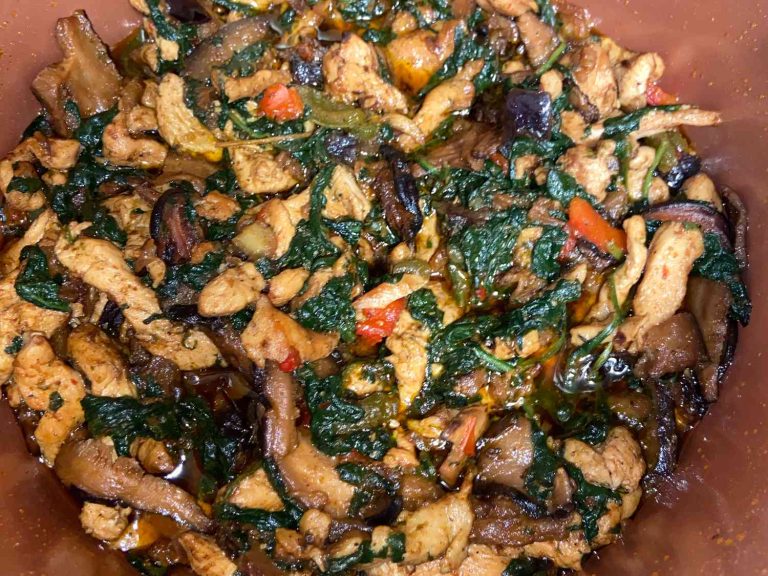Japanese Restaurant Style Salad Dressing: Homemade Recipes and Tips
Famous Japanese restaurant-style salad dressings often feature roots in traditional Japanese cuisine. These dressings use primary ingredients such as soy sauce, miso, rice vinegar, and sesame oil. Soy sauce provides a salty umami flavor, while miso gives depth and richness. Rice vinegar adds a tangy note, and sesame oil offers a nutty component. This combination creates a balanced, savory dressing that enhances various salads.
Modern Twists and Innovations
Modern versions of Japanese salad dressings introduce new ingredients and flavors. Chefs now incorporate yuzu juice, a citrus fruit, for a fresh taste. Adding wasabi or ginger offers a spicy kick. Some dressings feature blended vegetables like carrots or onions, providing a unique texture and color. These innovations enhance the traditional dressing, making it suitable for contemporary palates while preserving its Japanese essence.
Key Ingredients in Japanese Salad Dressing
Importance of Sesame Oil
Sesame oil introduces a nutty, rich flavor to Japanese salad dressings. Derived from sesame seeds, this oil provides a depth that complements other ingredients. Toasted sesame oil, in particular, adds a robust aroma, enhancing the overall taste of the dressing. Beyond flavor, sesame oil contains antioxidants and healthy fats, contributing to a nutritious profile.
The Role of Soy Sauce and Vinegar
Soy sauce and vinegar are foundational in Japanese dressings. Soy sauce, made from fermented soybeans, adds umami and saltiness. This key ingredient balances the dressing, preventing it from being overly sweet or tangy. Rice vinegar, milder and slightly sweet compared to other vinegars, adds acidity, enhancing flavor profiles without overpowering them. Together, they create a balanced, flavorful dressing ideal for various salads.
Comparison of Popular Brands
Store-Bought Vs. Homemade Dressings
Store-bought dressings offer convenience, but they may contain preservatives and artificial flavors. Homemade dressings consist of fresh ingredients and allow you to control flavors and nutrition. Preparing dressings at home means you can tailor the taste to your preference by adjusting soy sauce, vinegar, and sesame oil amounts. Store-bought options require no preparation and are consistent in flavor. If you prioritize freshness and customization, making your dressing might be the better choice. Otherwise, for quick, reliable options, store-bought dressings can be excellent.
Top-Rated Brands
Several brands stand out in offering quality Japanese-style salad dressings.
- Kewpie:
- Known for its rich, creamy texture.
- Popular variations include Deep Roasted Sesame.
- Ken’s Steak House:
- Offers a combination of traditional and modern flavors.
- Best known for its Asian Sesame dressing.
- Annie’s Naturals:
- Focuses on natural, organic ingredients.
- Provides a variety including Shiitake Sesame.
- Makoto:
- Renowned for its Ginger Dressing.
- Uses authentic Japanese recipes for an authentic taste.
- Trader Joe’s:
- Known for its Carrot Ginger Dressing.
- Provides affordable price and high quality.
Find these brands readily available in grocery stores and online, and explore their varied ranges to match your taste preferences.
Health Benefits of Japanese Style Salad Dressing
Nutritional Content Overview
Japanese style salad dressings, popular in many restaurants, incorporate traditional ingredients like soy sauce, miso, and sesame oil. These components provide a variety of essential nutrients. Soy sauce offers sodium and small amounts of protein. Miso, a fermented soybean paste, provides beneficial probiotics, vitamins, and minerals. Sesame oil, rich in healthy fats, contributes Vitamin E and antioxidants. Including these dressings in your diet can help supply key nutrients that support overall health.
Diet-Friendly Versions
For those adhering to specific dietary plans, Japanese style salad dressings offer adaptable options. Lower-sodium soy sauce or tamari suits low-sodium diets. Gluten-free soy sauce caters to gluten-intolerant individuals. Dressings made with light sesame oil reduce calorie intake while maintaining flavor. Vegan variants exclude animal products, often using plant-based miso and vinegar. These diet-friendly versions allow you to enjoy the taste and benefits of Japanese style salad dressings without compromising dietary needs.
How to Make Your Own Japanese Style Salad Dressing
Essential Tips for Authentic Flavors
To achieve authentic Japanese restaurant-style salad dressing at home, you need to use key ingredients like soy sauce, miso, and sesame oil. Each ingredient plays a critical role in the flavor profile. Soy sauce provides umami depth, miso adds a rich, savory note, and sesame oil imparts a nutty aroma.
- Use Fresh Ingredients: Freshness ensures bold flavors. Always opt for fresh ginger, garlic, and sesame seeds.
- Balance Flavors: Achieve a perfect balance by fine-tuning the proportions of salty, sweet, sour, and umami elements. Use rice vinegar or lemon juice for acidity.
- Add a Touch of Sweetness: A small amount of honey or mirin can balance the savory flavors.
- Incorporate Umami: Ingredients like dashi or bonito flakes can enhance umami, making the dressing more complex.
Quick and Easy Recipes
Creating your own Japanese salad dressing is simple and quick with a few essential recipes.
Classic Sesame Dressing
-
Ingredients:
- 3 tbsp sesame oil
- 2 tbsp soy sauce
- 1 tbsp rice vinegar
- 1 tbsp honey
- 1 tbsp toasted sesame seeds
- 1 tsp grated ginger
- 1 clove garlic, minced
-
Instructions:
- Mix all ingredients in a bowl.
- Whisk until well combined.
- Serve immediately or refrigerate for up to one week.
Miso Ginger Dressing
-
Ingredients:
- 2 tbsp white miso paste
- 2 tbsp rice vinegar
- 1 tbsp soy sauce
- 1 tbsp honey
- 1 tbsp grated ginger
- 2 tbsp vegetable oil
- 1 tbsp water
-
Instructions:
- Whisk miso paste, rice vinegar, soy sauce, honey, and ginger in a bowl.
- Slowly add vegetable oil while whisking until emulsified.
- Add water to adjust the consistency.
- Store in the refrigerator for up to one week.
Yuzu Dressing
-
Ingredients:
- 2 tbsp yuzu juice
- 1 tbsp soy sauce
- 1 tsp honey
- 2 tbsp olive oil
- 1 clove garlic, minced
- Combine yuzu juice, soy sauce, and honey in a bowl.
- Gradually add olive oil while whisking.
- Mix in the minced garlic.
- Use immediately or store in the fridge for up to one week.
Conclusion
Exploring Japanese restaurant-style salad dressings opens a world of rich flavors and culinary traditions. By understanding the significance of traditional ingredients and experimenting with modern variations, you can create dressings that elevate any salad. Whether you choose to follow classic recipes or craft your own unique blends, the key lies in using fresh ingredients and balancing flavors. Embrace the art of Japanese dressings and enjoy the delicious results in your kitchen.






